What Should Be the Charging Current for a 12 Volt Battery
How Much Charging Current Does a 12 Volt Battery Need
Understanding the correct charging current for a 12 Volt Battery is essential for ensuring both optimal performance and long battery life. Whether you're dealing with automotive, marine, solar, or backup power systems, knowing how much current your 12 Volt Battery needs during charging can prevent damage and increase efficiency. In this comprehensive guide, we'll explore the science behind charging, best practices, safety measures, and how to calculate the ideal charging current for various battery types.
- Basics of Charging a 12 Volt Battery
- Ideal Charging Current for a 12 Volt Battery
- Factors Affecting Charging Current Needs for a 12 Volt Battery
- How to Calculate Charging Current for a 12 Volt Battery
- Safety Considerations When Charging a 12 Volt Battery
- Best Practices for Maintaining a 12 Volt Battery
- Common Myths About Charging a 12 Volt Battery
- Charging a 12 Volt Battery in Special Conditions
- Charging a 12 Volt Battery
Basics of Charging a 12 Volt Battery
What is a 12 Volt Battery?
A 12 Volt Battery is a standard power source composed of six 2-volt cells connected in series. These are commonly used in cars, boats, RVs, and backup power systems. The chemistry can vary—lead-acid, AGM, gel, or lithium-ion—but the principles behind charging remain largely consistent.
Voltage vs. Current in Charging
Charging involves two critical parameters: voltage and current. Voltage pushes the electric charge through the battery, while current is the flow rate of that charge. Getting the charging current right ensures that the battery charges fully without overheating or degrading.
>>See also How Long Does a 36V Golf Cart Battery Last
Ideal Charging Current for a 12 Volt Battery
The 10% Rule of Thumb
A widely accepted rule for lead-acid 12 Volt Batteries is to charge at a current of about 10% of the battery's amp-hour (Ah) rating. For example, a 100Ah battery should ideally be charged at 10 amps.
Charging Current for Different Battery Types
Lead-Acid (Flooded): 10-20% of Ah rating
AGM (Absorbed Glass Mat): 10-25% of Ah rating
Gel: 5-10% of Ah rating (requires low current)
Lithium-ion: Up to 100% of Ah rating but requires Battery Management Systems (BMS)
Stage-Based Charging
Battery charging usually involves three main stages:
Bulk Stage: Maximum current until battery reaches about 80% capacity
Absorption Stage: Current tapers off while voltage is held constant
Float Stage: Very low current to maintain full charge
Factors Affecting Charging Current Needs for a 12 Volt Battery
Battery Capacity and Chemistry
Larger batteries or those with specific chemistries (like lithium) may tolerate higher charging currents. Always refer to manufacturer specifications.
Temperature
High temperatures reduce the internal resistance of the battery, which can increase charging current. Conversely, low temperatures can limit charging efficiency.
Age and Health of the Battery
Older batteries may have higher internal resistance, which can impact the ideal charging current. Damaged batteries should be charged at lower currents to avoid further degradation.
Charger Type
Some smart chargers automatically adjust current based on battery status. Manual chargers require careful monitoring to avoid overcharging.
How to Calculate Charging Current for a 12 Volt Battery
Using the Ah Rating
Use this formula: Charging Current (A) = Battery Ah Rating x Recommended Percentage
For example:
A 50Ah AGM battery at 20%: 50 x 0.20 = 10A
A 100Ah gel battery at 10%: 100 x 0.10 = 10A
Monitoring with a Multimeter
You can use a digital multimeter or a battery monitor to check the current during the charging process. This helps ensure that the battery isn’t being over- or undercharged.
Adjusting Based on Use Case
Heavy-duty applications like RVs or solar power may benefit from faster charging at higher currents. However, frequent deep discharges should be matched with careful charging practices.
Safety Considerations When Charging a 12 Volt Battery
Overcharging Risks
Excessive current can lead to overheating, gas buildup (in lead-acid types), and shortened battery life.
Undercharging Risks
Consistently low current can result in sulfation in lead-acid batteries, which reduces capacity over time.
Proper Ventilation
Always charge in a well-ventilated area to dissipate gases, especially with flooded lead-acid batteries.
Using the Right Charger
Ensure the charger is compatible with your 12 Volt Battery type and has features like automatic shutoff or multi-stage charging.
Best Practices for Maintaining a 12 Volt Battery
Regular Inspections
Check for corrosion, loose terminals, or swelling. These are signs that charging practices may need adjustment.
Keep Records
Log the charging cycles, currents, and voltage levels. This helps in diagnosing any long-term issues.
Use a Smart Charger
Modern smart chargers adapt to the battery’s needs and optimize charging current, prolonging battery life.
Avoid Deep Discharges
Try not to discharge below 50% capacity in lead-acid batteries to maintain health and efficiency.
>>See also Essential Facts About the 18650 Battery
Common Myths About Charging a 12 Volt Battery
Higher Current is Always Better
Not true. While it may charge faster, it also generates more heat and can reduce the battery’s lifespan.
Any Charger Will Do
Incorrect. Using a charger not suited to your battery type or capacity can cause irreversible damage.
You Can’t Overcharge with a Smart Charger
While rare, even smart chargers can malfunction. Periodic checks are still necessary.
Charging a 12 Volt Battery in Special Conditions
Solar Charging
Solar chargers must match the battery's voltage and current requirements. Use a charge controller to manage input.
In Cold Weather
Charging efficiency drops in low temperatures. Use temperature-compensated chargers or charge indoors if possible.
During Storage
Maintain a float charge or use a battery maintainer to keep the battery at full charge without overcharging.
Charging a 12 Volt Battery
Charging a 12 Volt Battery properly involves understanding several key factors, from the type of battery and its capacity to environmental conditions and the type of charger used. By following best practices and adjusting your charging current accordingly, you can maximize both performance and longevity. Whether you’re using the battery in a vehicle, solar setup, or for backup power, taking the time to learn how to charge it properly will pay off in the long run. Always remember that the optimal charging current for a 12 Volt Battery is not one-size-fits-all, and smart, informed charging leads to smarter, longer-lasting power.

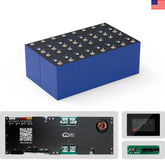



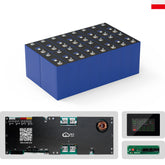

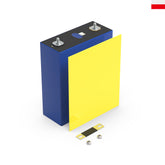

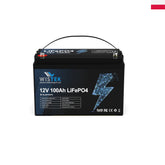
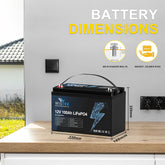


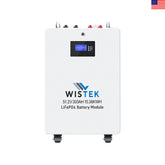
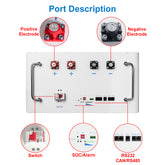
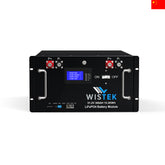
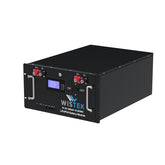


Leave a comment
All blog comments are checked prior to publishing